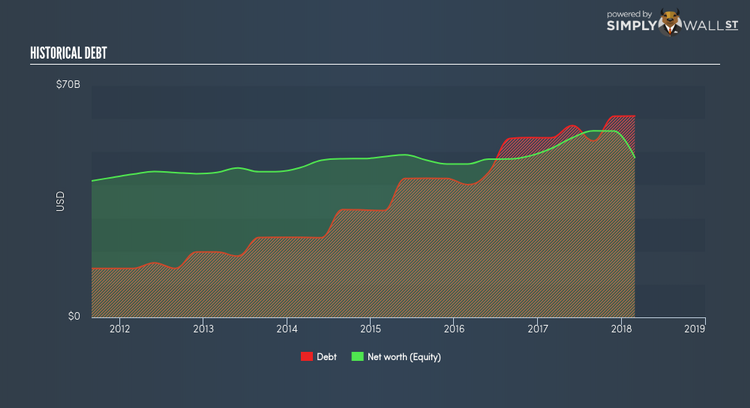What Investors Should Know About Oracle Corporation’s (NYSE:ORCL) Financial Strength

The size of Oracle Corporation (NYSE:ORCL), a US$197.05B large-cap, often attracts investors seeking a reliable investment in the stock market. Market participants who are conscious of risk tend to search for large firms, attracted by the prospect of varied revenue sources and strong returns on capital. However, its financial health remains the key to continued success. Let’s take a look at Oracle’s leverage and assess its financial strength to get an idea of their ability to fund strategic acquisitions and grow through cyclical pressures. Remember this is a very top-level look that focuses exclusively on financial health, so I recommend a deeper analysis into ORCL here. See our latest analysis for Oracle
Does ORCL produce enough cash relative to debt?
Over the past year, ORCL has ramped up its debt from US$43.86B to US$57.91B , which comprises of short- and long-term debt. With this increase in debt, ORCL’s cash and short-term investments stands at US$66.08B for investing into the business. Moreover, ORCL has generated cash from operations of US$14.13B in the last twelve months, leading to an operating cash to total debt ratio of 24.39%, signalling that ORCL’s debt is appropriately covered by operating cash. This ratio can also be interpreted as a measure of efficiency as an alternative to return on assets. In ORCL’s case, it is able to generate 0.24x cash from its debt capital.
Does ORCL’s liquid assets cover its short-term commitments?
With current liabilities at US$24.18B, it appears that the company has been able to meet these obligations given the level of current assets of US$74.52B, with a current ratio of 3.08x. However, anything above 3x is considered high and could mean that ORCL has too much idle capital in low-earning investments.
Does ORCL face the risk of succumbing to its debt-load?
Considering Oracle’s total debt outweighs its equity, the company is deemed highly levered. This isn’t uncommon for large companies because interest payments on debt are tax deductible, meaning debt can be a cheaper source of capital than equity. Accordingly, large companies often have an advantage over small-caps through lower cost of capital due to cheaper financing. No matter how high the company’s debt, if it can easily cover the interest payments, it’s considered to be efficient with its use of excess leverage. A company generating earnings before interest and tax (EBIT) at least three times its net interest payments is considered financially sound. For ORCL, the ratio of 15.87x suggests that interest is comfortably covered. High interest coverage serves as an indication of the safety of a company, which highlights why many large organisations like ORCL are considered a risk-averse investment.
Next Steps:
At its current level of cash flow coverage, ORCL has room for improvement to better cushion for events which may require debt repayment. However, the company exhibits proper management of current assets and upcoming liabilities. This is only a rough assessment of financial health, and I’m sure ORCL has company-specific issues impacting its capital structure decisions. I recommend you continue to research Oracle to get a better picture of the stock by looking at:
Future Outlook: What are well-informed industry analysts predicting for ORCL’s future growth? Take a look at our free research report of analyst consensus for ORCL’s outlook.
Valuation: What is ORCL worth today? Is the stock undervalued, even when its growth outlook is factored into its intrinsic value? The intrinsic value infographic in our free research report helps visualize whether ORCL is currently mispriced by the market.
Other High-Performing Stocks: Are there other stocks that provide better prospects with proven track records? Explore our free list of these great stocks here.
To help readers see pass the short term volatility of the financial market, we aim to bring you a long-term focused research analysis purely driven by fundamental data. Note that our analysis does not factor in the latest price sensitive company announcements.
The author is an independent contributor and at the time of publication had no position in the stocks mentioned.

 Yahoo Finance
Yahoo Finance 
